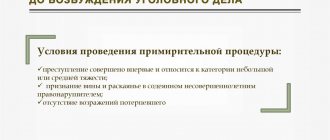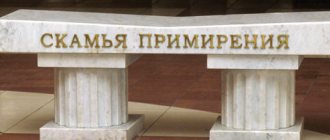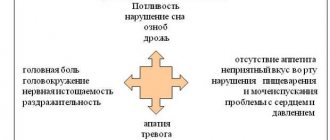How an employee stole secrets and escaped punishment. Real case
The citizen got a job with competitors and, at the first opportunity, copied all the data onto a flash card.
The technical security specialist stopped the first copying attempt, but the second one was successful. At the exit from the building, the employee was stopped by security officers; he voluntarily gave them the flash card. But the company was unable to hold the employee accountable: the court did not consider the fact of dissemination of information proven, since it did not reach an “unspecified circle of persons.”
An example from the practice of ELA lawyer Olga Shirokova
Often an employee discloses confidential information after dismissal. How to bring such a person to disciplinary responsibility? The employer has the right to recover damages through the court. But in this case, it is important that the provision on trade secrets includes a condition on non-disclosure of information after dismissal, noted Olga Shirokova.
Structure of a document on non-disclosure of confidential commercial information
Taking into account the regulatory features that were described in the previous sections of the material, an agreement (or other document) between companies on non-disclosure of SKTI may have the following structure:
1. Name, date and place of drawing up the document.
2. Details of the parties to the agreement.
3. Subject of the agreement:
- it is established that the parties undertake an obligation to non-disclose SKTI;
- includes a list of SKTI and information not recognized by SKTI;
- the form of transmission of SKTI is indicated (orally, in writing, in the form of photographs, electronically, etc.);
4. Rights and obligations of the parties (separately for each party).
5. Duration of the agreement (including the condition for the possibility of extension and the scheme for its execution).
6. Responsibility of the parties (for more details, see the following sections).
7. Special conditions (procedure for making adjustments to the agreement, algorithms for resolving disputes and other conditions).
8. Addresses and details of the parties not previously specified.
What a document on non-disclosure of secret commercial information concluded as part of an employment relationship might look like, see the material “Agreement with an employee on non-disclosure of trade secrets”.
How to protect a trade secret?
When the company has decided what constitutes a trade secret, what documents it contains, who can work with it, and to whom and why it can be transferred, it is worth thinking about how to protect it.
Train employees
Traditionally, employees are the weak link in protecting the organization, said Andrei Timoshenko. But this is not because they are malicious pests; many simply need to be taught how to work with trade secrets.
“Employees need simple and clear instructions on how to understand that you are working with a trade secret, what attacks you may be exposed to, how to identify and respond to them, what consequences await if the secret is disclosed, and how the company monitors the safety of trade secrets and those who work with it,” the expert emphasized.
How to get employee support
A good example of positive motivation is phantom shares (shares in a company that an employee can buy back according to a pre-agreed price formula): a person no longer works for the company, but dividends on phantom shares are still paid to him, and it is still beneficial for him to see the company prosper and grow rich , he remains ideologically “his own”.
But negative motivation needs to be created by familiarizing employees with the relevant legal documents and regulatory, especially criminal, legal framework, including Articles 183, 272 of the Criminal Code of the Russian Federation.
Pavel Katkov, owner of Katkov and Partners (KIP MONITOR technology)
What does the counterparty legally face for violating the terms of the non-disclosure agreement?
Violation by the counterparty of the terms of the agreement on non-disclosure of trade secrets means a high probability of negative consequences for both parties to the agreement:
1. For the owner of SKTI:
- increase in unjustified costs;
- deprivation of part of income and profit;
- receiving damage (material and other nature);
- loss of customers and other competitive advantages.
2. For the counterparty-recipient of SKTI:
- compensation for damage caused to the owner of the information;
- punishment in accordance with the law or under the terms of a non-disclosure agreement.
See the table below for what could happen to a counterparty who divulges other people’s production secrets:
| Rule of law | Content | Who faces punishment? |
| Art. 1472 Civil Code of the Russian Federation | Obligation to compensate for losses caused by violation of the exclusive right to a trade secret (unless another measure of liability is provided for by law or agreement) |
|
| clause 1 art. 183 of the Criminal Code of the Russian Federation |
| A person who collected SKTI through bribery, theft of documents, threats or other illegal means |
| clause 2 art. 183 of the Criminal Code of the Russian Federation |
| To a person who illegally disclosed or used SKTI without the knowledge and consent of its owner |
| clause 3 art. 183 of the Criminal Code of the Russian Federation |
| A person who caused major damage to the owner by illegal disclosure of SKTI or who made the disclosure out of selfish interest |
| clause 4 art. 183 of the Criminal Code of the Russian Federation |
| To a person who caused grave consequences to the owner of SKTI by illegal disclosure |
Corpus delicti
In the Criminal Code of the Russian Federation, punishment for disclosing trade secrets is provided for in Article 183. The object of the crime is public relations in the field of commercial activity. The subject of the crime is information that is a trade secret.
The corpus delicti is formal, that is, it is considered completed regardless of whether it was possible to disseminate information or there was only an attempt.
The subject of a crime is a legally capable person who was at least sixteen years old at the time of the crime. He knows the secret in connection with his official duties and he was warned in writing about liability for unlawful disclosure, or he obtained it through criminal means.
Documents for the introduction of CT
In order to activate the trade secret regime, you need to draw up supporting documentation. The list of documents for the introduction of CT is as follows:
- regulations on CT, which is signed by the head of the enterprise and persons authorized to access classified materials;
- inclusion of additions in labor and contract documents of persons who have access;
- transfer of all data that is covered by the CT regime to file media labeled “Trade Secret”.
Large companies can create a department that will deal with the information security of the organization. This method will help avoid leakage of materials, and this will have a positive impact on the work of employees and the profit of the enterprise.
Arbitrage practice
Example 1
Electron LLC operated a commercial information protection regime. The category of secret information included a customer database with contact information. Citizen Petrov entered into an oral agreement with the director of a competing enterprise to transfer the database electronically. For this, Petrov was to receive a monetary reward in the amount of 50,000 rubles. The fact of copying the database to external media was recorded by the system administrator of Electron LLC. The fact of transfer of commercial information to the director of a competing enterprise was confirmed by witness testimony. Petrov was prosecuted and sentenced to forced labor for three years.
Example 2
Petrov worked at Novinka LLC, which sold used cars. Citizen Petrova approached him with a request to find out whether her friend bought a car. Petrov provided the information to her without any material benefit for himself, since he did not consider this information secret. At the same time, Petrov’s employment contract contained a warning about liability for the disclosure of commercial information, and the company took measures to protect such information. For his action, Petrov was fired for disclosing commercial information and suffered administrative liability in the form of a fine of 1,000 rubles.
A specialist will answer your questions in the comments to the article
Additional terms of the non-disclosure agreement
Despite the availability of sufficient tools in judicial practice and legislation that help to bring to justice violators of rights to confidential information, the owner of the SKTI may have difficulties in this matter. This is especially true for the effective protection of production secrets (know-how).
In some cases, it can be difficult to prove in court the fact of violation of the rights and legitimate interests of the injured owner of SKTI (for example, the ruling of the Supreme Arbitration Court of the Russian Federation dated March 13, 2013 in case No. A56-54588/2011).
Additional sanctions provided for in the non-disclosure document can help in this matter: its parties may provide, in addition to legal punishment, other punitive measures (for example):
- a penalty in a pre-agreed fixed amount;
- payment to the injured party for all losses incurred (moral and material).
In fact, penalties must correspond to the actual consequences of the leak, disclosure of information or damage caused.
In addition, the owner of the SKTI has the opportunity to prove the guilt of the counterparty for violating the terms of the non-disclosure agreement of the SKTI by contacting the antimonopoly service (FAS RF).
When initiating administrative proceedings on the fact of an appeal (the fact of unfair competition associated with the illegal disclosure of SKTI - Article 14.7 of the Law “On the Protection of Competition” dated July 26, 2006 No. 135-FZ), the FAS has significant powers to obtain documents and evidence from the participants in the proceedings .
A proven fact of illegality of the counterparty’s actions in such situations may entail the following sanctions:
| Rule of law | Content | Who faces punishment? |
| clause 2 art. 14.33 Code of Administrative Offenses of the Russian Federation | From 1/100 to 15/100 of the offender’s proceeds from the sale of goods (works, services) on the market in which the offense was committed, but not less than 100 thousand rubles. | To a competitor who introduced into circulation a product with illegal use of SKTI |
When else a taxpayer can be punished, find out from the materials in the “Responsibility and Penalties” section.
What is CT?
A trade secret is information of the following nature: Scientific and technical. — all materials about patents, know-how, production characteristics of the organization. It also includes information about the personnel structure, technical achievements and the type of equipment located in the production;
Managerial - information about company management methods;
Personal information about the owners of the company;
Pricing and financial information;
Planning documents - this category includes plans for the development of the enterprise, inventories, sales and purchases, as well as a list of finished products;
This definition also includes information such as: materials on clients, partners and information about negotiations that have been held or that the organization plans to conduct in the future.
Personal data, which also includes information about the income of company employees, cannot be disclosed without the person’s personal agreement. This rule applies in accordance with Article 3 of Federal Law No. 152.








